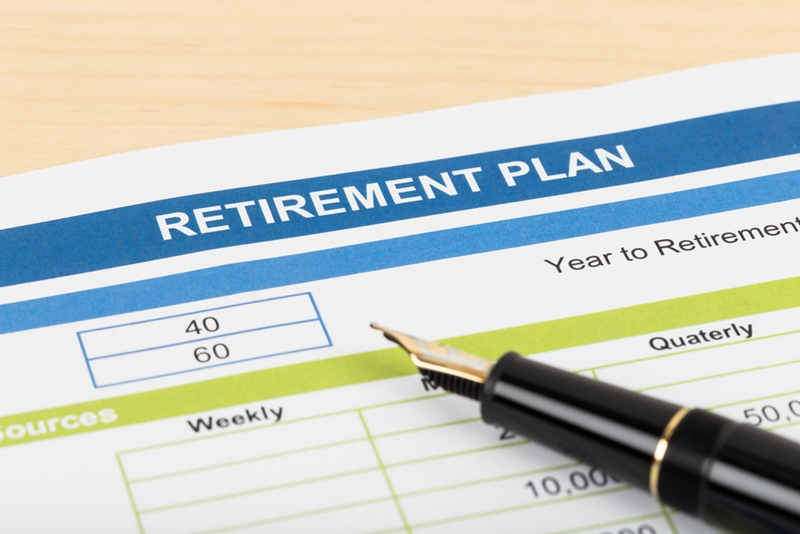Managing Risk In Retirement
A good retirement plan is one you can start now
Financial risk seems like a frightening concept, but it is actually central to every economic transaction. Risk is also essentially unavoidable. At its core, risk is the potential for loss and stems from an endless number of factors. When saving for retirement, our natural instinct is to avoid risk whenever possible. However, there is always a tradeoff between risk and reward. With the right money management techniques and a little bit of research, it’s possible to achieve a healthy balance of risk and reward in your retirement savings plan.
Emergency savings
We would all like to make saving money as easy and safe as possible. This is why many people save for retirement by putting a little money from each paycheck into a savings account. This is a good start and should be the first step for anyone starting from scratch in their retirement journey. Personal finance columnist Suze Orman is one of many experts who urge workers to strive toward building a savings cushion1 in a traditional bank account before investing in stocks or bonds. Advice on the exact amount varies, but Orman recommended eight months of bare minimum living expenses to protect against job loss, medical emergencies or other unexpected financial hardship. By contributing just 5 percent of each paycheck to a savings account, this can be accomplished faster than expected. Once you’ve completed this step, you can start looking ahead further.
Workers should strive to build a three month savings cushion
Age-related risk
As Forbes contributor Joel Johnson noted, the amount of risk2 you’re willing to accept in a long-term savings plan should depend on your age. When you’re younger, you can take on more risk because you have more time to recoup any losses you may have. Investing in retirement isn’t about eliminating risk entirely, but rather balancing the risk with the potential for gain. That’s why Johnson suggests re-evaluating your retirement savings plan about once per year. Schedule this “yearly exam” of your portfolio at a regular interval and use it to adjust how much risk you are taking on in your investments.
Target retirement funds
Once you’ve made it to your emergency savings goal and your financial picture is still looking rosy, it’s best to start investing. While keeping a cash cushion available for unexpected expenses is always a good idea, this money will slowly lose value due to inflation. If you’ve reached your emergency savings goal, look into investing future savings into a target retirement fund. These funds are designed to automatically adjust the allocation of investments depending on your age and optimal level of risk. For example, as Trent Hamm noted in The Simple Dollar, an investor starting out in his or her 20s or 30s with a target retirement fund3 will automatically have most savings allocated into the stock market. Stocks are riskier financial instruments but provide high returns in a short amount of time. As an investor ages, target retirement funds automatically shift into bonds. Bonds are less risky and can provide modest returns over a long period of time. The best part about a target retirement fund is the ability to “set it and forget it” – just pick the year you plan on retiring (65 years old is the most common) and the fund does the rest, usually for a small fee.

Retirement tax breaks
If you are nearing or entering retirement, there are a number of tax breaks you can utilize to save more. Kiplinger rounded up the most commonly overlooked tax breaks4 available to retirees. These include the IRS rule that allows for a bigger standard deduction from your taxes. As of 2015, a 64-year-old can claim a deduction of $6,300, while a person only one year older can claim $7,850. This could save you as much as $400 if you are in the 25 percent tax bracket. Retirees can also deduct medical expenses and Medicare premiums with only a few basic restrictions. If one member of a married couple is still working while the other has already retired, the employed spouse can contribute up to $6,500 per year in an Individual Retirement Account owned by the retiree. This could also provide major (tax advantaged) savings opportunities.
Stock market risk
In an interview with the Toronto Star, Bridget Eastgaard spoke about a service she founded5 called Money After Graduation. Eastgaard noted that many young investors had little faith in the stock market and were wary of putting any money in these funds. This feeling pervades even older investors, many of whom still insist that the mattress is a better place to stash money than the bank. In reality, it’s naive to say we can place our full trust in IRAs or 401(k) funds to provide a real return. But the fact is these instruments have proven successful for the vast majority of investors over the last several decades. Even with recent uncertainty in the global stock market, investing is still generally a safe bet. It’s the way in which investors manage their risk is what makes all the difference.
Although regular savings accounts are perfect for an emergency fund, saving for retirement in those accounts is not recommended. Because the money sits without a high enough interest rate to combat inflation, investing in stocks and bonds can equate a higher return. With the right risk management techniques, retirement savings can be very easy to do. All investments have risk, but employing that risk correctly can make your retirement fund grow by the time you need it.
The views expressed by the articles and sites linked in this post do not necessarily reflect the opinions and policies of Cash Central or Community Choice Financial®.
Sources:
1Orman, Suze. (2022, Jul 21). Retrieved from: https://www.suzeorman.com/blog/Emergency-Funds-When-to-Give-Them-a-Checkup
2Johnson, Joel. (2016, Feb 1). Retrieved from: https://www.forbes.com/sites/joeljohnson/2016/02/01/rewarding-risk-in-retirement/?sh=303d267b3d6a
3Hamm, Trent. (2019, Oct 29). Retrieved from: https://www.thesimpledollar.com/investing/retirement/the-hows-and-whys-of-a-target-retirement-fund/?utm_source=PANTHEON_STRIPPED&utm_medium=PANTHEON_STRIPPED&utm_campaign=PANTHEON_STRIPPED/
4McCormally, Kevin. (2022, Dec 14). Retrieved from: https://www.kiplinger.com/retirement/603058/most-overlooked-tax-breaks-for-retirees
5Roseman, Ellen. (2015, Dec 2). Retrieved from: https://www.thestar.com/business/personal_finance/2015/12/02/why-young-investors-avoid-the-stock-market-roseman.html

 You must have JavaScript enabled to use this site.
You must have JavaScript enabled to use this site.
 For a better user experience consider upgrading your browser.
For a better user experience consider upgrading your browser.

